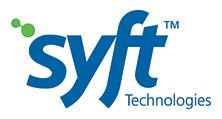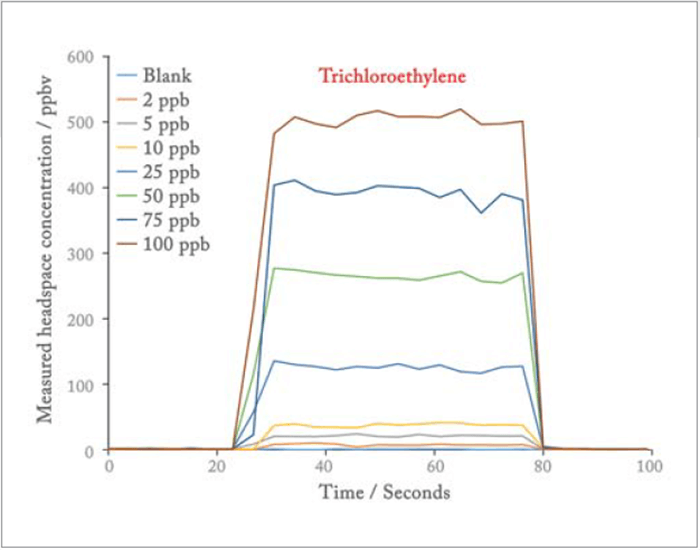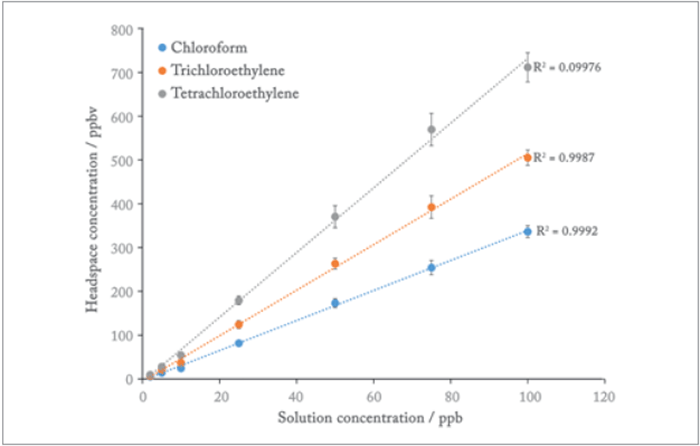Organochlorine compounds such as chloroform, trichloroethylene (TCE), and tetrachloroethylene (perchloroethylene, PCE) found widespread use in diverse industries in the 20th century. Although usage is now greatly reduced, these compounds continue to be significant contaminants in air, soil, and water. The purge and trap approach is most commonly applied for analysis of these species in water, followed by gas chromatography analysis coupled with either electron capture detection (GC-ECD) or mass spectrometry (GC-MS). Not only are these methods slow, the GC requires moisture to be removed. Application of SIFT-MS can accelerate analysis through direct headspace analysis as the need to purge, trap, and dry are all eliminated. Standards containing chloroform, trichloroethylene, and tetrachloroethylene were prepared from a 1,000-ppm solution in methanol. From this stock solution, 10 µL was transferred into 10 mL of water to make a 1-ppm standard solution. The solutions for linearity and repeatability measurements were prepared by taking 20 µL, 50 µL, 100 µL, 250 µL, 500 µL, 750 µL and 1,000 µL aliquots and filling them to a total of 10 mL in water in 20-mL headspace vials. This yielded solutions ranging in concentration from 2 to 100 ppb.



The solutions were analyzed using a Syft Technologies Voice200ultra SIFT-MS instrument integrated with a GERSTEL Multipurpose Sampler (MPS) (GERSTEL, Mülheim an der Ruhr, Germany) equipped with a GERSTEL agitator/incubator and headspace vial racks. The solutions were incubated for 15 minutes at 60 °C. Headspace was sampled using a 2.5-mL headspace syringe (heated to 150 °C; fill speed of 200 µL s-1) and injected into the SIFT-MS instrument’s inlet at a flow-rate of 50 µL s-1 (giving a total flow rate of ca. 420 µL s-1). Figure 1 shows the results obtained for trichloroethylene analysis, illustrating very stable injection by the autosampler and measurement by the SIFT-MS instrument. These data, together with that obtained simultaneously for chloroform and tetrachloroethylene, are plotted as linearity curves in Figure 2. Linearity is excellent. Error bars correspond to the measurement uncertainty across the repeated measurements during injection (Figure 1). Repeatability was investigated at a solution concentration of 50 ppb. The RSDs obtained with six replicate injections were 3.3 percent, 1.8 percent, and 1.5 percent for chloroform, trichloroethylene, and tetrachloroethylene, respectively. This study demonstrates that SIFT-MS is a very powerful new technique for rapid determination of chlorinated VOCs in water. Direct analysis using automated SIFT-MS is sensitive, linear, and repeatable. SIFT-MS provides substantial throughput increases over traditional purge and trap-GC methods, since no preconcentration or drying is required.




